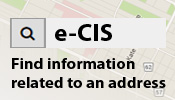Boulevard and Pavement Cuts
The City of Winnipeg Public Works Department Engineering Division plays an important role in overseeing the restoration of approximately 4,500 street cuts each year.
Our mission is the management and effective restoration of excavations in the Right-of-Way, which ensures quality and continued use of our City's street infrastructure to the satisfaction of our customer.
Our vision is to continuously improve our cut restoration management, achieve fewer disruptions within the Right-of-Way infrastructure and improve quality restoration service.
What is a Street Cut?
Street cuts are any cut, break, tear, excavation, or the removal of any part of the surface within the right-of-way. This work is performed by utility companies, private contractors, and/or city crews to repair existing or install new infrastructure. This includes but is not limited to gas, water, wastewater, communication lines, etc.
If at any time you notice the street cut area is unsafe, please contact 311.
Street cuts are temporarily capped and filled until permanent restoration can be completed. These cuts are to be kept in a condition that are safe for which that portion of the Right-of-Way is reasonably expected to be used until permanent restoration. This may include temporary rough / uneven surfaces that are not graded to existing condition. An unsafe cut would include situations where the temporary restoration has sunk considerably below existing surfaces, undermining of pavement surfaces, and heaved sections that create tripping hazards.
Street Cut Process
- Authorized permit applicant obtains a street cut permit;
- Applicant carries out work by excavating boulevard and/or pavement;
- Applicant backfills and maintains the street cut until permanently restored;
- Public Works assesses permanent restoration requirements;
- Restoration is completed by a City crew or licensed contractor;
- Public Works inspects the restoration to ensure compliance with City Standards and Specifications.
Restoration Scheduling
Street cuts are performed year-round, with temporary restorations taking place to make the excavation safe until permanent restorations can be scheduled. For more information, please see Cut Administration/Restoration.

